Tuesday Triage #99
- TUESDAY TRIAGE #99 by Vadim Drobinin
- On heading back to the South
- Things I enjoyed reading
- 1. Fine dining faces its dark truths in Copenhagen by Imogen West-Knights
- 2. Continuous Glucose Monitoring on the Apple Watch by @hturan
- 3. Installing a payphone in my house by @bertrandom
- 4. The man who built his own cathedral by Matthew Bremner
- 5. On stretch wrap by Anna & Kelly Pendergrast
- 6. How to pick the least wrong colors by @ilikescience
- 7. 3,134 miles, 18 pairs of sneakers, multiple cartel checkpoints: A run across Mexico by @ksieff
- 8. Shakespeare's Latin and Greek by Tom Moran
- 9. My students cheated... A lot by @MattCrumpLab
- 10. A Crime Beyond Belief by Katia Savchuk
- Things I didn't know last Tuesday
- 1. Bees are legally fish in California
- 2. Grimace from McDonald's
- 3. Asemic writing
- 4. Gold Diggers origins
- 5. A slightly head-down posture might help you look more friendly
- 6. Mustazzoli
- 7. Grand Empress Börte
- 8. Enzyme is what makes stevia sweet
- 9. Wiretapping prevention
- 10. Cato Street Conspiracy
- Book of the week
- Thank you and see you in a week!
TUESDAY TRIAGE #99
by Vadim Drobinin ¶
Your weekly crème de la crème of the Internet is here!
07.06.2022 (read in browser)
-
Intro
Whatever is on my mind this week. -
Things I enjoyed reading
Ten-ish articles I found worth reading. -
Things I didn't know last Tuesday
Ten-ish facts I didn't know when I wrote the previous edition. -
Book of the week
Some thoughts on the latest book I've read.
On heading back to the South ¶
As you probably noticed from the previous newsletter, I've spent these weeks exploring more northern parts of the UK, and then taking my time to get back to the capital.
Most of my travels revolve around food in some form, whether it's talking to people who make it, or visiting restaurants famous for serving it, and this trip wasn't an exception.
The results are hundreds of memories and photos but that would be a story for a different post in a different blog, so for now, in no particular order, a few highlights.
This is a sweetbread with some black garlic sauce from an Edinburgh restaurant Aizle:
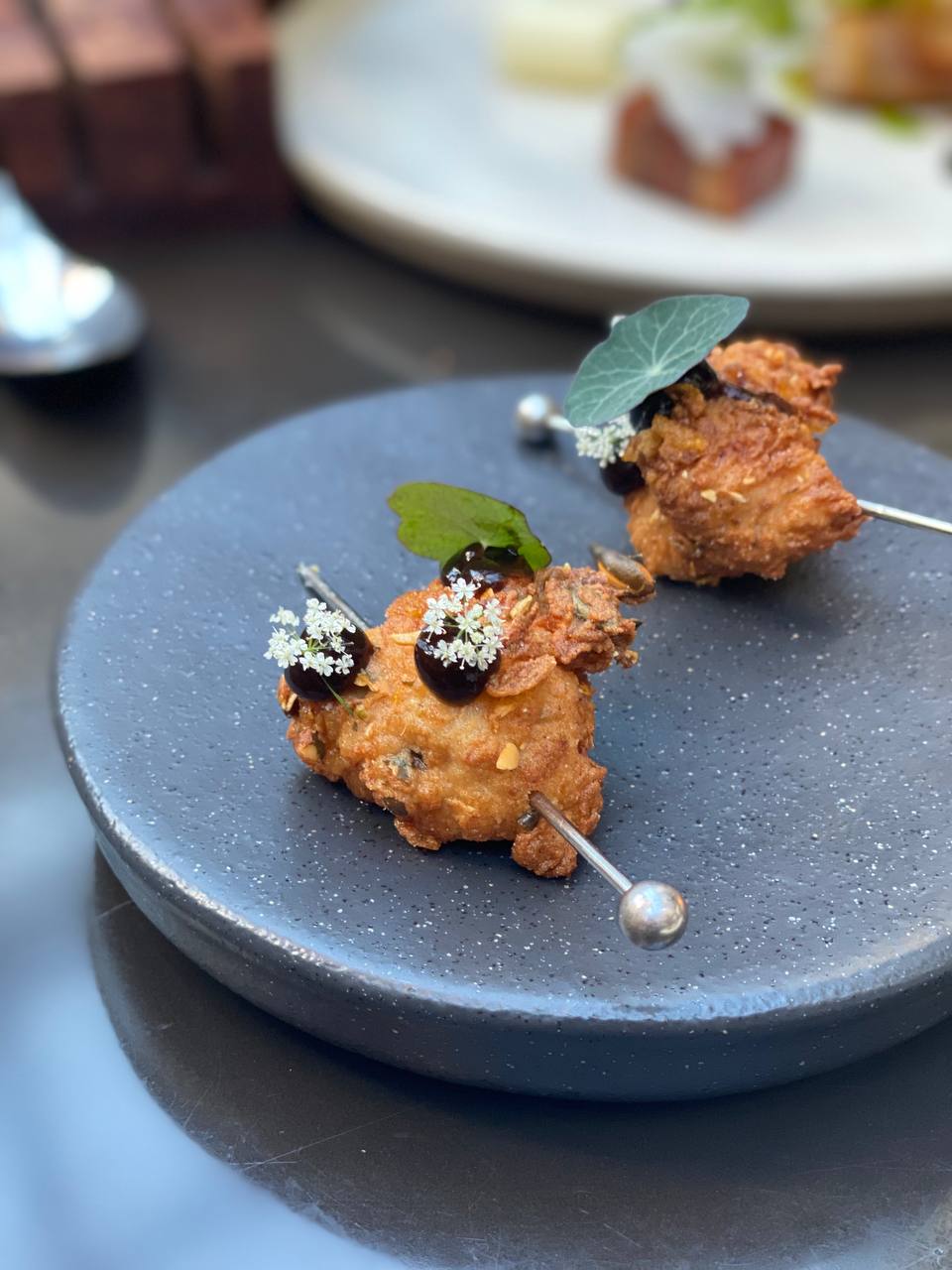
And that's a flatbread with Jersey Royals, lardo, green garlic and yogurt at Timberyard in Edinburgh as well:
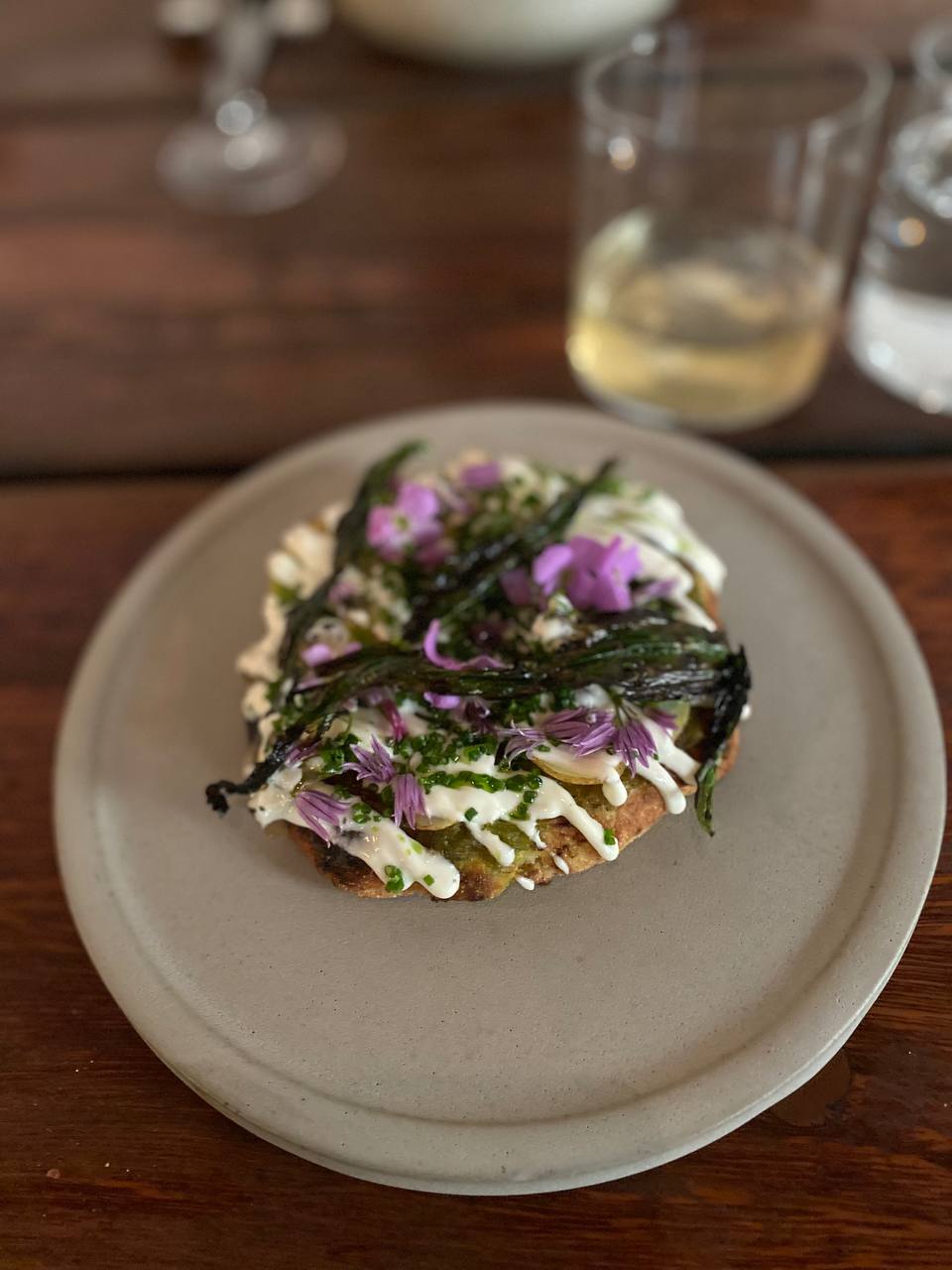
A mind-blowing blood pudding with Charcuterie sauce at Trakol in Newcastle:
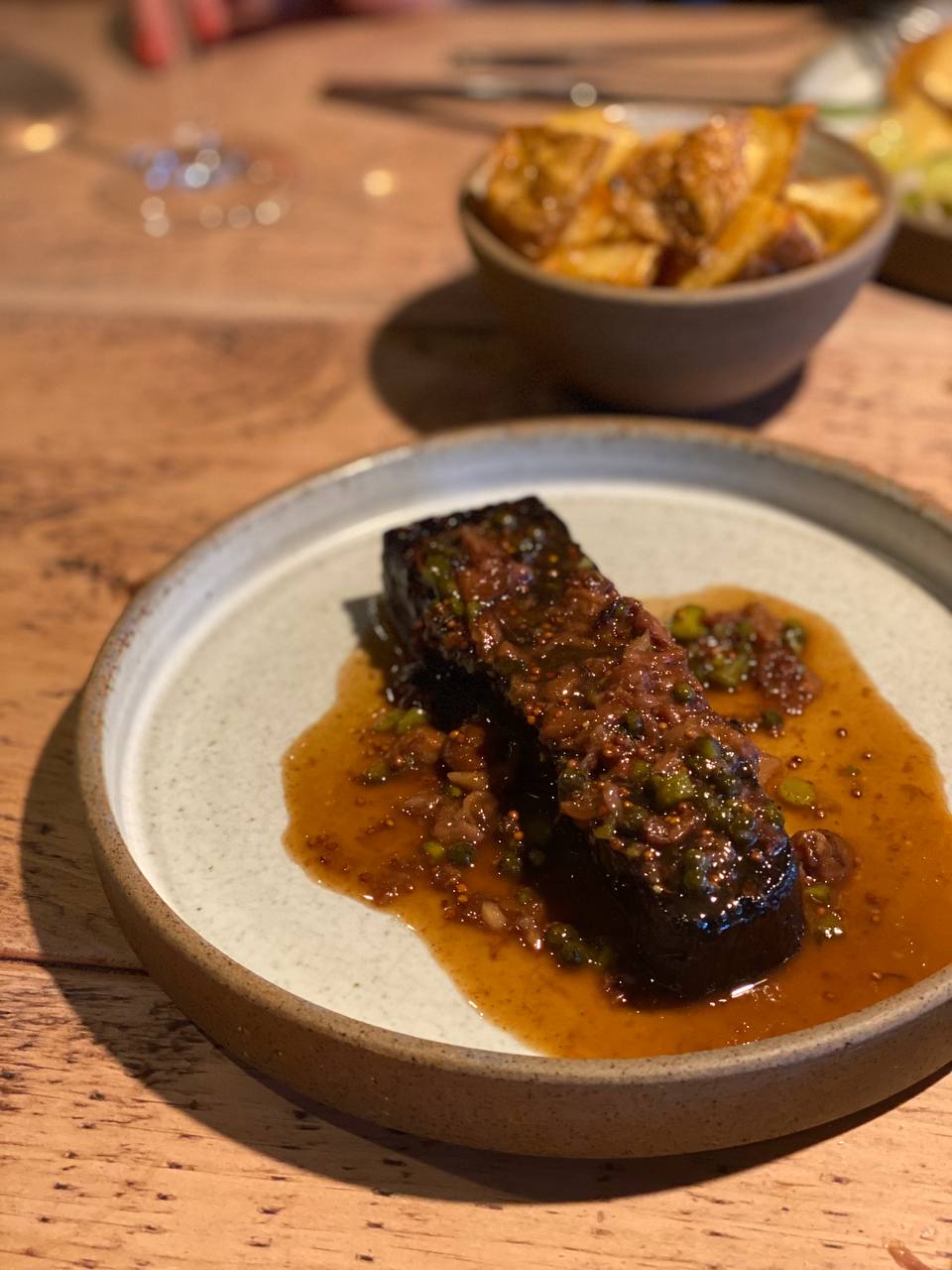
We also came back to the Newcastle-based Cook House and tried among many other dishes this salt beef sourdough with English mustard aioli and swet cucumber pickle:
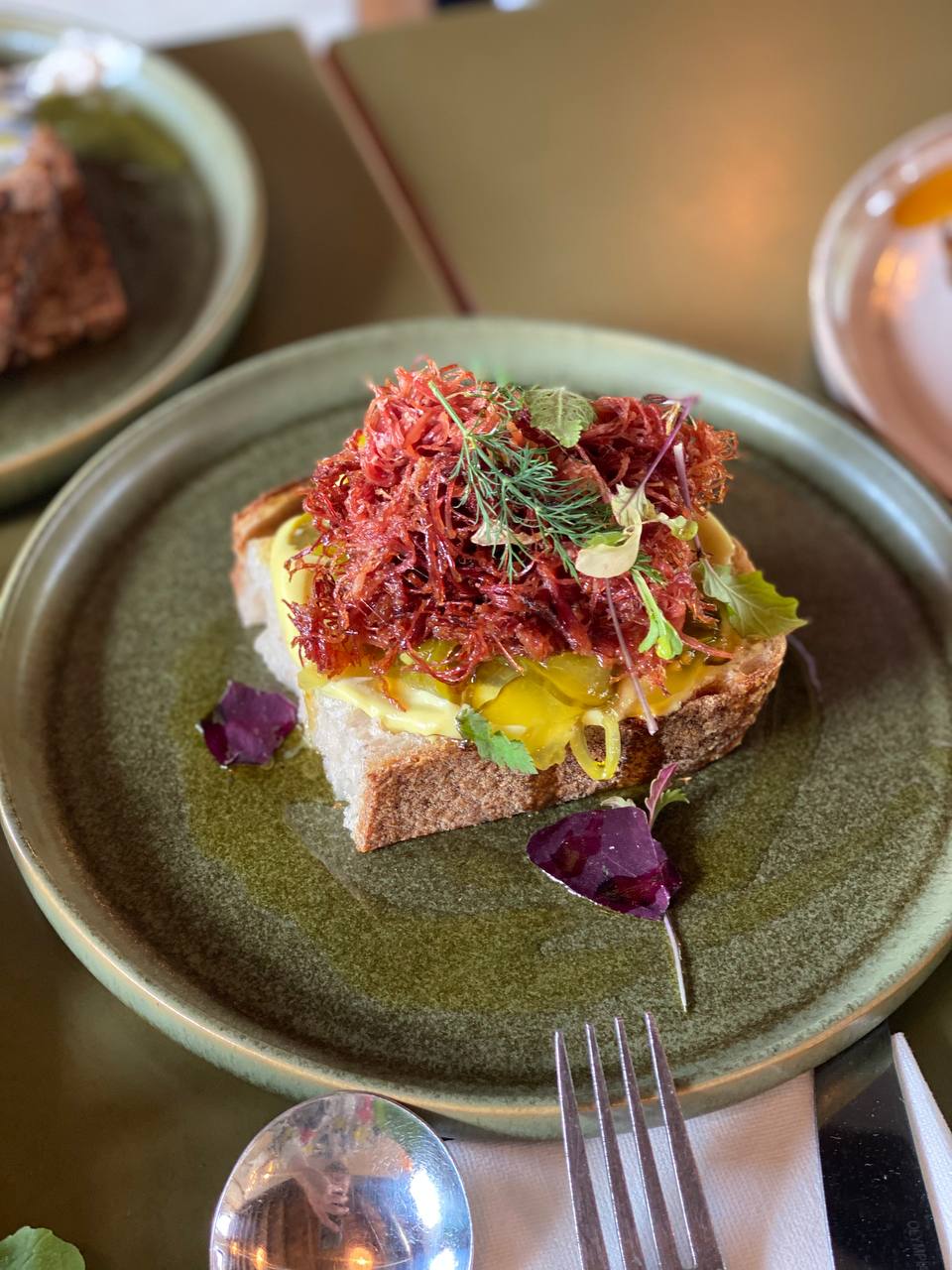
Last but not least, upon our return back home we hosted a small sharing plates dinner for friends from one of our favourite London bars, and I must say, stirring drinks for bartenders is both harder and more rewarding than for the others.
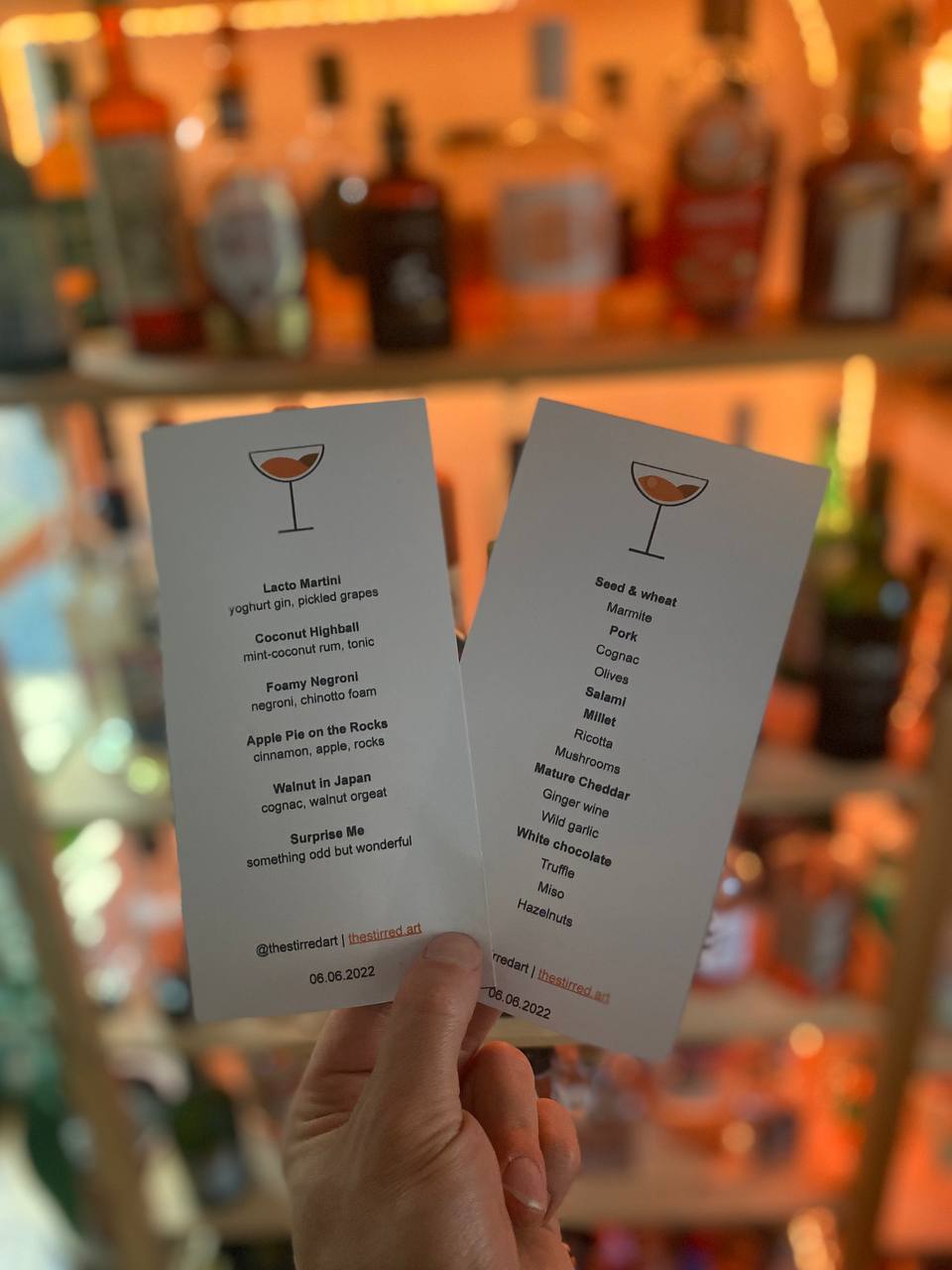
What a week!
Things I enjoyed reading ¶
1. Fine dining faces its dark truths in Copenhagen by Imogen West-Knights ¶
As guests of fancy restaurants we never see the majority of hard work that goes into making the dining experience so special. We probably are aware of certain difficulties, from suppliers to prep to cleaning, but these are just words until you start dealing with them yourself.
In fine-dining restaurants, two stories are being told. The first is in the dining room, a perfectly choreographed show of luxury and excellence, a performance so fine-tuned, down to the decor, the staff uniforms, the music, the crockery, that in some ways the food itself is the least important element. And then there is the story that you, as a diner, are never supposed to hear. The story of what happens on the other side of the kitchen wall. In Copenhagen, at last, someone is trying to make us listen.
As someone who never worked at a commercial kitchen, I spent the last few years trying to understand the hospitality industry better, but given that for me that's a hobby, not the way to earn for a living, I probably will never fully comprehend how hard it is.
2. Continuous Glucose Monitoring on the Apple Watch by @hturan ¶
This week is the WWDC week, which is for us mobile developers like a proper Christmas but mid-way through the year. I was lucky enough to receive an Apple WWDC scholarship in 2015, and that was a great way to meet the community, but these days I was mostly staying up-to-date by reading rumours and news, some of which reported possible glucose monitoring included in watchOS 9.
So far there are no confirmations of that, but someone decided to skip the wait and did it themselves:
To get current blood glucose readings showing up on an Apple Watch face, most apps today make use of the calendar, placing blood glucose readings as calendar events and then encouraging the use of one of the calendar complications to provide glanceable data. Obviously this is not ideal, as we’re limited to complications designed for calendar events, and the syncing mechanisms are unreliable.
To me, the most impressive part in the whole process is how smooth the interaction between the device and the watch screen complication is, given how unreliable Watch Connectivity might be.
3. Installing a payphone in my house by @bertrandom ¶
I barely rememeber paying for the Internet via a phone, and even then, in my hometown you probably couldn't easily call a payphone on a street, so while this part of the story doesn't really bring any nostalgic memories I definitely appreciate the rest of it.
For the next few months, this became a bit of a cat-and-mouse game with me and the ISP. I printed out a list of credit card numbers that I had generated and would carry them around with me. Whenever I saw a payphone, I would either call them to set up a new account or write down its location for future use. Sometimes I would get a representative that I had talked to before that would recognize my voice, other times they would insist on calling back the next day, which meant camping out at a payphone hoping it would ring. If I was with a friend, I’d have them do it for me, writing down what I wanted them to say.
This also reminds me a lot about Kevin Mitnick, who's history of hacking was more or less based on using phones and social engineering.
4. The man who built his own cathedral by Matthew Bremner ¶
Your views of religion might be different, but this article is worth it if just for the photos of the most contemporary cathedral I've ever seen:
The rest of the cathedral was an architectural Frankenstein’s monster propped up on mismatched bricks, tires, wheels, food cans, plastic and excessive quantities of concrete. Large chunks of the building were already in decay, invaded by moss and rising damp. In the aisles dusty cement bags were piled as high as the first-floor gallery. Other rooms erupted with broken tiles, dismantled cement mixers, motorbikes, rotten wood, oxidised saws, festering ropes, chicken carcasses and plastic bags fossilised in pigeon shit. It sprawled over an area the size of a football pitch.
If I ever make it to the Camino de Santiago, I'll have to make it through Spain to visit it.
5. On stretch wrap by Anna & Kelly Pendergrast ¶
The dark side of a mere cling film, the stretch wrap: this post explains in great details how important it is to the logistics of pretty much any company that ships something, from luggage to cargo.
Some elements of the shipping process have been almost fully automated or mechanized, for example the loading of containers on and off ships. But the act of consolidating products into cargo for transit, and deconsolidating that cargo back into goods, is often too eclectic to be fully automated. During these critical points of transition, stretch wrap plays a vital role in helping workers turn products into cargo. With stretch wrap, like things can be combined into a single concise unit, and unlike things can be forced together into a palletized bundle.
The same could be said about the film used in the kitchen, and even though the plastic it is made of is not always recycable, it helps to save way more food than any glass container.
6. How to pick the least wrong colors by @ilikescience ¶
I never thought I would enjoy a post on colours and algorithms so much, but it ended up not being strictly about algorithms, and only partly about colours:
The first criteria was one of the most challenging to translate into an algorithmic score. What does it mean for a color to be “nice-looking?” I knew that I wanted the colors to look similar to Stripe’s brand colors because I thought Stripe’s brand colors look nice; but what makes Stripe’s brand colors look nice? I quickly realized that, in the face of hundreds of years of color theory and art history, I was way out of my depth.
Would it help me the next time I pick up a colour palette? Probably not, but it was really interesting to read nonetheless.
7. 3,134 miles, 18 pairs of sneakers, multiple cartel checkpoints: A run across Mexico by @ksieff ¶
An inspiring and to some extent visually interactive story about running through Mexico:
In an era of energy gels and endurance drinks, he’s consuming mostly mineral water, cacao and a traditional ground maize called pinole. He accepts dinner invitations from strangers, even when it means eating questionable seafood. He gets sick — a lot.
Instead of following a direct route through the country, Silva is running deep into rural Mexico, along dirt paths that disappear into the mountains. He logs his runs on Strava, but the global mapping software doesn’t recognize many of the unmarked trails. The mileage registers as an orange line slicing randomly through the wilderness, like the flight path of a hijacked airplane.
As it happens with interactive stories, reading from a phone might be less exciting.
8. Shakespeare's Latin and Greek by Tom Moran ¶
A really interesting essay on attempts to learn more about Shakespeare.
While there are many things we either don't know for sure, or can't learn from diaries of the author or his relatives and friends, apparently we can at least agree on the languages he spoke:
The two speeches are radically different, yet their respective rhetorical structures can be argued to be remarkably similar. I believe it demonstrates how Shakespeare was able to take a Classical model and make use of it in his own way. By closely studying Sophocles, very possibly in Greek, Shakespeare was able to elaborate on his model and embroider on the same general structure while crafting something significantly different yet equally effective.
It's also quite cool to read about the logic behind those claims: from comparing his writing with Greek authors to quoting certain lines.
9. My students cheated... A lot by @MattCrumpLab ¶
A proper detective story about a teacher who was added to their students' group chat and eventually exposed dozens of cheaters by applying data science and R.
Some of the students in the chat could be identified from the names they use on WhatsApp, and other students could be identified from their phone numbers. I wrote a program to cross-reference phone numbers, and voila, I had identified 97% of the users on the WhatsApp chat. Then, I wrote a script to split the chat by user and time. I could see what each student wrote/posted and when they sent it.
Looking back at my university years, when presented with an opportunity to cheat I probably wouldn't hesitate much given that the subject wasn't interesting to me, but discussing quiz answers in a chat with a teacher just doesn't sound right.
10. A Crime Beyond Belief by Katia Savchuk ¶
Another almost detective but also quite sad story about a man who was an aspiring lawyer but due to a bipolar disorder started to do weird things:
He especially didn’t want anyone finding out about the time a delusion took hold of him. It happened while he was working at Harvard, in an office on the fourth floor of Pound Hall, a concrete building at the edge of campus. He began to suspect that the government was tapping his phone and hacking his computer. Officials were after him, he decided, because some of his clients had been accused of having links to terrorists. Nothing specific triggered his paranoia—it began as a feeling and his mind filled in the gaps.
The main takeaway from the article for me is that talking with a specialist is always the key, as well as the family support. Once any of that is missing, the things rarely go well.
Things I didn't know last Tuesday ¶
1. Bees are legally fish in California ¶
Right, here me out:
The 1970 act explicitly protected “fish,” which were initially defined as invertebrates. And because the act has protected snails and other invertebrates that live on land since, Tuesday’s ruling said it interpreted the legislation to also include bees.
That doesn't make any sense and shouldn't be.
2. Grimace from McDonald's ¶
I hardly remember this character from Happy Meals, mainly because growing up I haven't been to a McDonald's that often, but now it makes sense:
Bates also unofficially revealed that Grimace, one of the McDonald's happy meal characters, is in fact, a taste-bud.
"He is an enormous taste bud, but a taste bud nonetheless," Bates said.
That's an odd name for something meant to help to enjoy the food though:

3. Asemic writing ¶
Just learnt about the name for what I used to draw on the sides of my notebook papers back at school:
Asemic writing is a wordless open semantic form of writing. The word asemic /eɪˈsiːmɪk/ means "having no specific semantic content", or "without the smallest unit of meaning".

The early records belong to Chinese calligraphers, who were dubbed "drunk" for their unreadable styles. These days it is mostly used as an art form.
4. Gold Diggers origins ¶
Apparently "gold diggers" were first named in a play, and a century ago that was a big problem for the society:
Gold diggers also appeared in cartoons and on postcards, usually shown in a restaurant, eating and drinking freely and running up the check. So they not only took advantage of men, but their other sin included eating too much, in violation of the idea that true ladies had naturally small appetites.
Check out the pictures from the source as well, that's the century-old social advertisement at its best.
5. A slightly head-down posture might help you look more friendly ¶
I didn't know that the position of head (not the smile or eyes position) determines the way the person is perceived.
In rating and ranking tasks the authors found that a neutral posture was perceived as most cooperative compared with head-up and head-down postures. Both rotating the head up and rotating it down produced similar decreases in the perception of cooperativeness. As a result, individuals having negative-related traits with upward and downward head postures might be perceived as less cooperative compared to individuals with a neutral head position.
I does seem to be based on the height of a person too, although maybe less so.
6. Mustazzoli ¶
I tried this dessert only yesterday, but now am just binging on it. There is not much information about it in the English speaking part of the Web, so here is my approximate translation.
Mustazzoli are dry cooked wine biscuits decorated with sesame and flavored with cinnamon, orange and cloves.
The ones I have look very similar (albeit a bit thinner) and taste like something between figues, orange peel, and vanilla dough.
7. Grand Empress Börte ¶
While Genghis Khan was conquering the rest of Europe, his wife was ruling the country:
In 1178, a 17-year-old Mongol woman married a man she hardly knew. And while her husband traveled and fought and conquered, she ruled those who remained in Mongolia, managing every aspect of daily life in a massive nomadic camp. Commanders and shepherds alike reported to her, and she coordinated complex seasonal migrations of thousands of people and their livestock. At 28, she became the Grand Empress of the Mongol Empire; her name was Börte.
Which actually seems like a common thing in among these folks, but she also managed to do a lot.
8. Enzyme is what makes stevia sweet ¶
There are lots of sugar-replacements, and while personally I don't notice much of a difference, some people do, and researchers think it might have something to do with the way enzymes work:
Without the branched glucosides, says lead researcher Joseph Jez of Washington University in St. Louis, stevia loses its sweetness.
I also always thought of enzymes as something capable of breaking proteins (i.e while making garum), so a side effect of making sugar-replacements if spretty cool.
9. Wiretapping prevention ¶
I've heard about wiretapping but haven't seen it in much details, given that these days there are simpler ways to access one's personal data. However it was different in the past:
In 1934, Congress passed the Federal Communications Act. Section 605 of the law, which addressed wiretapping, contained the line: “No person not being authorized by the sender shall intercept any communication and divulge or publish.” Yet that “and” could be read two ways. In the first interpretation, the line was tantamount to a blanket ban on wiretapping; in the second, it meant that it was only illegal to wiretap if you also shared the recording.
The law and its dual meaning is a fun historical peculiarity.
10. Cato Street Conspiracy ¶
Not all attempts to get rid of the prime minister were successful as the history tells us:
On the evening of 23 February 1820 around 25 men gathered in the hayloft of a stable on Cato Street, off Edgware Road in London. Led by Arthur Thistlewood, they had met to formulate a plan to murder the prime minister, Lord Liverpool, and his cabinet, some of whom were dining in Grosvenor Square. Former soldiers John Harrison and Robert Adams were to kill the ministers before the butcher James Ings would ‘cut off every head that was in the room, and the heads of Lords Castlereagh and Sidmouth he would bring away in a bag’.
At least these days we have social networks to went off the heat.
Book of the week ¶
If you follow my journey for at least half a year, you've probably read my notes on making wine in London, on wine stages, and on bottling wine.
However I don't read much about wine and prefer to learn through trial and error (mostly trial), and that's why I would probably ignore Oz Clarke's English Wine if it weren't for the title.
The thing is, while Scotland is not famous for its wines, both England and Wales at least try to grow and ferment grapes. Calling these wines "English" would be a terrible mistakes, unless it was on purpose, and if you ever explored the beautiful world of wines from the UK you do know that this is the correct name indeed.
"British wine" stands for wines made in the country by using imported juice concentrate. There is nothing wrong with that, but it's obviously less interesting than the wines made out of grapes grown right here, and for the lack of a better unused word they all are called "English wine".
So I thought, if the author payed enough attention to the title, the rest of the book will follow, and it didn't disappoint.
But in Britain, Bacchus ripens much more slowly and holds on to its acidity and consequently its bright elderflower and hedgerow scent that would be lost in sunnier climes. The flavour can be a little sappy, the acid reminiscent of mild lemon zest, and the fruit might even be peachy or at very least as ripe as a good English eating apple or a crisp greengage plum. The wine can be dry, or not quite dry. One or two producers like Chapel Down have even tried aging it in oak barrels and to my surprise it works quite well. There is even some sparkling Bacchus. It took a while for Bacchus to get going here – I did two tastings of over 100 English white wines in 1991 and there were only three Bacchus wines included, and only the wine from Three Choirs was much fun.
That being said, Bacchus is one of my favourite grapes, and the very first English wine that I've tried nearly half a decade ago was indeed from the Three Choirs. I was reminded of that a few months ago during a visit to Lake District, so can at least guarantee that their 2019 vintage is still as good as before.
Thank you and see you in a week! ¶
If you have any questions, or want to suggest a link for the next newsletter, please drop me a message on Twitter or reply to this email.
Cheers! 🍸